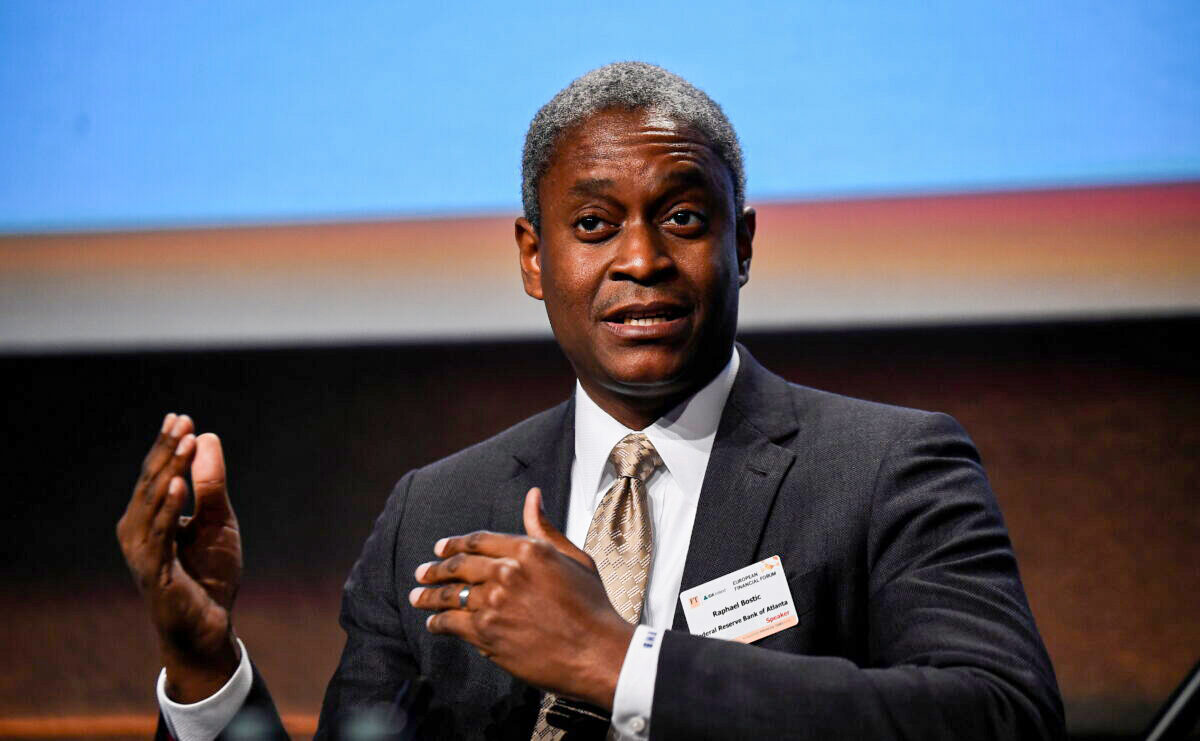The U.S. annual inflation rate eased to 3.2 percent in October, coming in slightly lower than the consensus estimate of 3.3 percent, according to the Bureau of Labor Statistics (BLS). This is notably down from 3.7 percent in September.
Last month, the Consumer Price Index (CPI) was unchanged at zero percent monthly.
Core inflation, which strips the volatile energy and food components, slowed to 4 percent year over year, down from 4.1 percent in September and slightly under the market forecast of 4.1 percent.
On a month-over-month basis, the core CPI jumped 0.2 percent.
Shelter was the biggest driver of inflation, as the index edged up 0.3 percent from September to October. Compared to the same time a year ago, the shelter index is up 6.7 percent. Economists have noted that shelter is a lagging indicator and there are signs that housing costs could be easing heading into 2024.
In the 12 months ended in October, food prices were up 3.3 percent; they also inched higher by 0.3 percent monthly. Within the food index, the most notable acceleration was in the meats category. Beef and veal surged 1.2 percent, pork rose 1.3 percent, ham jumped 0.5 percent, and chicken increased 0.3 percent.
The energy index fell 2.5 percent monthly, with gasoline prices plunging 4.9 percent. After hitting a 2023 high of about $90 this fall, crude oil prices have endured a selloff, despite the Israel-Hamas war and tight global supplies. West Texas Intermediate (WTI) crude prices have been trading below $80 in recent sessions.
Electricity costs rose 0.3 percent, and utility natural gas services surged 1.2 percent.
New vehicles and used cars and trucks dropped 0.1 percent and 0.8 percent, respectively. Apparel costs were flat. Medical care commodities and medical care services increased 0.4 percent and 0.3 percent, respectively. Transportation services surged 0.8 percent.
Financial markets cheered the latest data in pre-market trading, with the leading benchmark indexes rallying. The Dow Jones Industrial Average advanced around 1 percent, while the Nasdaq Composite Index soared about 1.5 percent.
The U.S. Treasury market was red across the board. The benchmark 10-year Treasury yield fell 14 basis points, to below 4.5 percent. The two-year yield plummeted roughly 17 basis points, to 4.87 percent, and the 30-year bond shed more than 9 basis points, to 4.65 percent.
Looking ahead to the November CPI, the Federal Reserve Bank of Cleveland’s Nowcasting model estimate suggests the annual inflation rate will ease to 3.2 percent. Still, the core CPI will be flat at 4.2 percent.
Price Pressures Persist
Across the U.S. economy, there has been a reacceleration in price pressures, particularly in the manufacturing sector.
Last month, the Institute for Supply Management’s (ISM) Manufacturing Purchasing Mangers’ Index (PMI), a measurement of the sector’s direction, found that factory activity is contracting. A key finding in the report was the revival of input price pressures amid higher energy costs.
The ISM’s services PMI also reported elevated prices.
In September, the S&P Global Manufacturing PMI highlighted that input costs surged at the fastest pace since April, while output charges expanded at the most significant rate in six months.
“Manufacturers saw sharper increases in costs and output charges, as inflation regained some momentum in the sector. Higher oil and oil-derived input prices again spurred hikes, as rates of inflation accelerated for the third month running,” said Sian Jones, the principal economist at S&P Global Market Intelligence, in the report.
Overall, businesses are still enduring inflationary challenges, says Andrew Crapuchettes, the founder and CEO of Red Balloon.
“Inflation really is eating everyone’s lunch,” Mr. Crapuchettes told The Epoch Times. “And so the ability to pay your bills is increasingly difficult because wages are not keeping up with inflation.”
These issues are ostensibly embedded in the marketplace, with consumers expecting little improvement in inflation over the next 12 months as two much-anticipated surveys were recently released.
The November University of Michigan’s Consumer Sentiment Index weakened for the fourth straight month and slipped to a six-month low. This was fueled by one-year-ahead inflation expectations rising to 4.4 percent, the highest since April. The five-year outlook edged up to a 12-year high of 3.2 percent.
The New York Fed’s Survey of Consumer Expectations showed that the median one-year-ahead expectation for inflation was 3.6 percent in October, down from 3.7 percent in the previous month. The three- and five-year-ahead expectations were 3 percent and 2.7 percent, respectively.
A 2 Percent Target
Fed Chair Jerome Powell has warned that the central bank’s 2 percent target rate will not be achieved until 2025.
While speaking at a Nov. 9 International Monetary Fund (IMF) event, Mr. Powell noted that policymakers are wary of “head fakes” from inflation, adding future progress on price restoration will emanate from slowing economic growth and softer labor market conditions.
“We know that ongoing progress toward our 2 percent goal is not assured. Inflation has given us a few head fakes,” he said. “We will continue to move carefully, however, allowing us to address both the risk of being misled by a few good months of data, and the risk of overtightening.”
San Francisco Fed President Mary Daly told CNBC on Nov. 10 that she was unsure if interest rates were “sufficiently restrictive” to lower inflation. But the central bank needs to stand in a “ready position” should the data warrant additional rate hikes.
But while uncertainty and skepticism appeared from a chorus of Fed officials, one regional central bank head is optimistic that the 2 percent target rate could be achieved as early as the second half of 2024.

Atlanta Fed President Raphael Bostic told Bloomberg Television earlier this month that a lot can happen in the coming months and refrained from providing a specific date, but identified the second half of next year as when inflation could touch the standard rate. At the same time, the institution should begin cutting interest rates before it reaches the 2 percent inflation rate because the data “tell me that our policies are really starting to work through the economy in a way that can help us get to our 2 percent target for inflation with minimal pain.”
Mr. Bostic’s anticipation differs from other top Fed officials and staff economists. For example, the Summary of Economic Projections (SEP) shows that top Fed officials do not see the 2 percent objective being realized until 2026.
Others agree with his projections. Morningstar, for example, recently published its Economic Outlook, forecasting that the average inflation rate will be 1.8 percent from 2024 to 2027, “undershooting the Fed’s 2 percent target rate.”
“We still think that the Fed’s rate hikes executed thus far will eventually slow GDP growth sufficiently and that inflation will drop to 2 percent (while avoiding an outright recession),” said Preston Caldwell, the chief U.S. economist for Morningstar Research Services, in an analyst note. “The effects of these rate hikes are still accumulating throughout the economy as borrowers roll over to higher interest rates and exhaust their financial cushions.”
But Peter Schiff, the chief economist and global strategist at Euro Pacific Capital, thinks the latest inflation data could be a head fake.
“Don’t be fooled by Oct.’s flat #CPI. It’s just one month, and it was only 0.1 percent lower than expectations. Year-over-year headline is still 3.2 percent, and core is still 4 percent,” he wrote on X. “The #inflation numbers have been bottoming and future CPI numbers will be much hotter, even as the economy cools.”
The Federal Open Market Committee will hold its final two-day policy meeting of the year next month. Investors widely expect the central bank to keep the benchmark federal funds rates unchanged at a 22-year high of 5.0– 5.25 percent, according to the CME FedWatch Tool. The futures market is beginning to pencil in rate cuts as early as next summer.
From The Epoch Times


